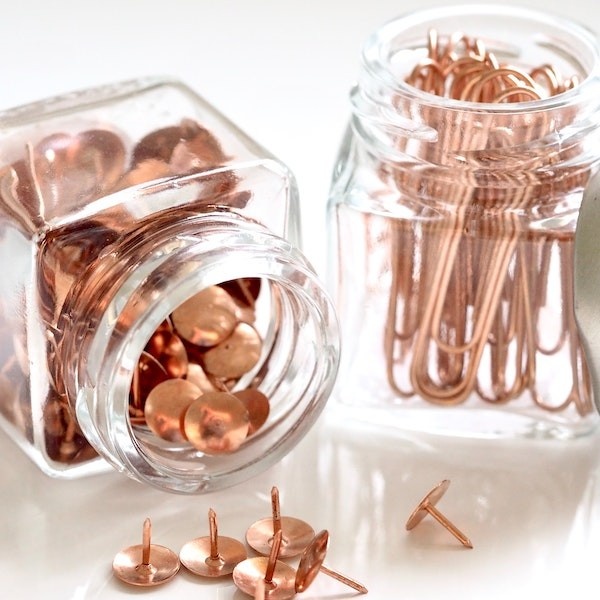Welcome to the EMDR effects podcast..
Rachel: I'm Rachel, Totton an EMDR certified therapist and consultant in training. Here, we explore the transformational power of eye movement, desensitization and reprocessing therapy. Each episode we'll chat experts share inspiring stories and break down the science behind EMDR. Whether you're a mental health professional, or on your own healing journey, or just curious about EMDR.
This podcast is for you. Thanks for tuning in to the EMDR effects podcast.
Let's discover the power of healing together.
Hello, and welcome to the EMDR effects podcast. I'm Rachel Totten, your host EMDR certified therapist and consultant in training. I'm so excited to have you join me today. As we dive into an overview of EMDR therapy, this powerful tool has transformed countless lives, and I'm thrilled to share more about how it works and why it's so effective. And today's episode we'll explore what EMDR therapy is, discusses numerous benefits and focus on how can specifically [00:01:00] improve your relationships.
We'll look at real life examples and hypothetical case studies to illustrate these points. So whether you're a therapist or someone looking for help, or just curious about EMDR, this episode is for you.
So let's start with a bit of history. EMDR, which stands for eye movement, desensitization and reprocessing was developed by Francine Shapiro in the late 1980s. Now the story of the development is actually quite fascinating. Shapiro discovered the basics of EMDR almost by accident. She noticed that certain eye movements seem to reduce the distress of her own disturbing thoughts.
Curious about this. She began to experiment and conduct research. And what. Started as a chance, observation, blossomed into a revolutionary therapeutic approach. Over the years, EMDR has evolved significantly. Initially some, in the scientific community were skeptical. But as more research was conducted. The evidence grew.
EMDR is now well-researched highly effective therapy for treating trauma and various mental health conditions. As recognized by the world health organization and [00:02:00] the American psychiatric association as a go-to treatment for PTSD. Isn't it amazing how an accidental discovery. Has become such a pivotal tool in mental health care. All right.
So now let's get into the nuts and bolts of EMDR, the core concepts and mechanisms that make it work. At its heart, EMDR uses something called bilateral stimulation. This. Typically involves eye movements, but it can also include tapping or auditory tones. The key. Is that. Uh, these stimulations. Our bilateral, meaning they alternate from one side of the body to the other. During the EMDR session, a therapist will guide you through the bilateral stimulations. While you focus on a traumatic memory. This process helps the brain reprocess the memory.
Think of it like reorganizing a messy closet before EMDR, that memory was like a pile of clutter taking up space and causing distress. The bilateral stimulation helps swore and file away the memory in a way that reduces its emotional charge. It's still there, but it's no longer causing the same level of distress. This [00:03:00] reprocessing allows individuals to heal from their traumas in a deep and meaningful way. Now let's walk through the eight phases of EMDR therapy.
Each phase is important in ensuring comprehensive treatment and lasting results. So it's important to understand how they work together. The first phase is history taking in this phase, we gather your full history and identify. Specific memories and issues that we need to target. This is like mapping out our journey.
We need to know where we're starting from and where we want to go. Next is a preparation page. Here we prepare you for the EMDR process. This includes teaching you some self control techniques to handle emotional distress. It's like packing your bag up with all the necessary tools and supplies for your journey ahead. Then we move into the assessment phase.
This is where we identify a specific goal or target memory. As well as negative beliefs, emotions and physical sensations associated with it. We also identify the positive belief that you'd like to have instead. Think of it, like plotting the specific points that I map or [00:04:00] identifying exactly where the problems are in. What we want to achieve. The fourth phase is desensitization.
This is where the bilateral stimulation happens And we begin to reprocess the traumatic memory during this phase, you'll focus on the memory wall, following the therapist, guidance with bilateral stimulation. This is the heart of the journey where the work really happens. The desensitization phase can last multiple sessions depending on a target memory and your goals as a client. This is where the client and the therapist worked together to determine how long and how much time is. A lot of, for a desensitization session. It's not uncommon for my clients to need at least two or three sessions, or sometimes even longer to move through a memory and it's Connections. Once the desensitization is complete.
We move to the installation phase. Here we work on strengthening the positive belief. You identified earlier is like planting a flag on top of a mountain, solidifying the gains that you've made. Next is the body scan phase. In this phase, [00:05:00] we ensure that there are no lingering physical sensations associated with the memory. We want to make sure your body is fully on board with the changes your mind has made.
It's like doing a thorough check to make sure every part of you has arrived safely to the destination. After that comes the closure phase. This phase is all about making sure you're back tested equilibrium. Before you leave the session, we use self control techniques from the preparation phase to ensure that you were feeling grounded and stable. Think of it, like setting up camp and making sure everything is secure before nightfall.
Finally. In the reevaluation phase. we use this phase to see how the changes are holding up and determine if there are any new issues that need to be addressed. It's like reviewing your journey and planning any future trips. And then you have, there are the eight phases of EMDR Each phase builds on the last creating a comprehensive and effective treatment process. But I understand these phases. You can see how EMDR works to address inhaled traumatic memories. Leading to profound and lasting [00:06:00] changes.
So now I want to get into the benefits of EMDR therapy. This therapeutic approach is effective. In treating a wide range of issues, including PTSD, anxiety, depression, phobias, and even chronic pain. What makes EMDR so powerful is this ability to help individuals process and move through their traumatic experiences. Think about it. When we're stuck with unresolved trauma, it can feel like we're carrying around a heavy backpack full of rocks. Each rock represents a different painful memory or experience. EMDR helps. Us take those rocks one by one. Out and reduces the burden and Leading to a significant emotional relief. This isn't just about feeling better temporarily. It's about real lasting change. Let's shift the focus to the. Benefits. Of EMDR specifically related to relationships. Trauma and unresolved emotional issues can create barriers in our connection with others. Imagine trying to connect with someone through a thick foggy window. You can see each other, but the view is [00:07:00] distorted and it's hard to communicate clearly. EMDR helps clear away that fog by addressing the root causes of the distress. Allowing more authentic and meaningful connections. One of the key ways EMDR improves relationships is by enhancing emotional regulation. When we reprocessed traumatic memories. It becomes easier to manage our emotions and reactions. Picture this. Before EMDR, your emotional reactions might have been like a rollercoaster. I'm predictable and intense. After EMDR, it's more like a smooth train ride. You're still experiencing emotions, but they're more manageable and less likely to derail your day. This leads to healthier communication and reduces conflicts in relationships. When you're able to stay calm and collected, it's much easier to have productive conversations and resolve issues without escalating into arguments. Trusted intimacy are also crucial elements in any relationship. And they often suffer when past traumas interfere. EMDR helps individuals heal. From these past wounds, allowing them to be more present and engaged with their PA [00:08:00] partners. Family children and friends. Imagine trying to build a house on shaky foundation. No matter how beautiful the house is.
If the foundation isn't solid, it's going to be on stable. EMDR helps strengthen the foundation. Making it possible to trust. And build intimacy on solid ground. Uh, another significant benefit of EMDR. XE impact on self-esteem and self-worth. Trauma can negatively impact how we see ourselves. Often leading to feelings of inadequacy and self-doubt. Through EMDR individuals can replace those negative beliefs with positive ones. It's like changing a pair of dark, scratched up glasses for clear, bright. A new pair.
I had a client once say to me, I had to take off my rose colored glasses. And once I took off those rose colored glasses. I really was able to see things. For how they are. And we're and without EMDR, I don't think I would have been able to do that.
Suddenly you can see yourself and the world around you more clearly. This improves your self worth and confidence is crucial for forming healthy relationships. When you [00:09:00] feel good about yourself, you're more likely to engage in positive nurturing interactions with others. So to connect us all together.
Let me share a story about a client. I'll call Sarah. Sarah's journey with EMDR therapy is a beautiful example of how this therapeutic approach can transform lives and relationships. Sarah came to me, struggling with severe anxiety and trust issues. Both of which seven from her past trauma, she had been in a car accident a few years back. And since then she couldn't shake off the fear and distress this trauma. Wasn't just affecting her daily life.
It was taking a toll on her relationship with her partner, mark. Every time mark was late coming home or didn't answer his phone immediately. So I was going to diety with skyrocket and she would imagine the worst and we lash out in fear and frustration, creating a cycle of conflict and misunderstanding between them. When Sarah started EMDR therapy, we begin with the history taking phase where we mapped out her traumatic experiences and identified the specific memories or trigger her anxiety.
This phase was crucial because it allowed me to understand the root of her [00:10:00] distress. And plan our approach. Next in the second phase, the preparation phase, I taught Sarah some self control techniques to help manage her emotional distress. We practice deep breathing visualization was she found incredibly helpful in calming. In her mind during these moments of anxiety.
Additionally, I gave her homework and resources to implement in her home independently. To where she could work on building up the tools. And developing the skills in her home environment. To help manage symptoms of anxiety.
We moved into assessment phase where we identify the car accident. As a primary target memory, Sarah described vivid images and the negative beliefs that she held about herself. Like feeling helpless and out of control and the intense physical sensations. This is our heart racing in And her chest. tightening. During this desensitation phase, we use bilateral stimulation. While Sarah focused on the traumatic memory.
This phase was intense, but Sarah was determined With [00:11:00] each session, she noticed the emotional charge of her memory decreasing. The images became less vivid and the distressing memories started to fade. In the installation phase, we worked on strengthen. Her. Positive belief. Sarah wanted to believe that she was safe and in control. Through the bilateral stimulation, we installed these positive belief. Reinforcing her new sense of safety and empowerment. The body scan phase was next.
We checked for any lingering physical discomfort associated with the memory. Initially, Sarah. Felt slight tightness in her chest. We'll continue processing. Even the physical sensations began to dissipate. Uh, closure was vital for Sarah. Each session ended with ensuring she felt grounded and stable. And we use the self control techniques from the preparation phase to help her leave. Session feeling. Calm. And knowing that she had a way to Reiley herself at home. If her anxiety, Pete.
During the re-evaluation phase when Sarah came back into session. We evaluated her progress. The transformation was [00:12:00] remarkable. The traumatic memory of the accident. No longer held the same power over her. Each session reduced her anxiety significantly. And she felt ever needed sense of confidence and. Often described feeling light by. Not having the same weight of the experience. Connected in her memory network. The beautiful part about Sarah's journeys, how it impacted the relationships with our partner and our family. As her anxiety lessened. She found it easier to trust him. The constant fears of suspicion melted away. Replaced by open communication, understanding Sarah shared how she was having a more heartfelt conversation. It felt more connected. To him than she had ever been before. Sarah's story is just a small Testament to the power of EMDR therapy. By addressing and healing from past trauma.
She's not only able to find relief from her anxiety. But she was able to rebuild and strengthen her relationship. It truly had a ripple effect. In her life. This transformation has how EMDR can help individuals break free of how [00:13:00] their past is impacting their today and create healthier, more fulfilling connections with those they love. Today we explored. What EMDR therapy is its benefits and how it can improve relationships by enhancing emotional regulation, building trust, intimacy, improving self-esteem. Our next episode, we're going to talk about how EMDR is different than traditional talk therapy. If you enjoyed this episode, please subscribe to the EMDR podcast, leave a review and share it with those who you might find beneficial in learning more about EMDR. Say connection with me on social media and Instagram, Facebook. head over to my website, if you would like to join my mailing list. Additionally, if you have any questions about EMDR therapy that you would like me to just podcast. Feel free to connect with me.












